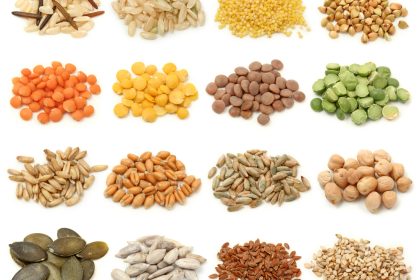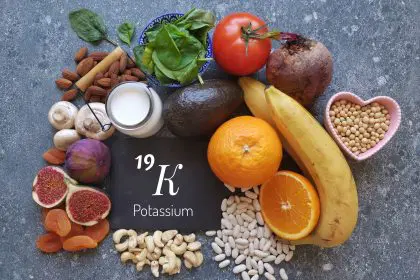A stroke occurs when blood flow to part of the brain is interrupted, causing brain cells to die from lack of oxygen. For the Black community, this medical emergency represents a disproportionate threat. Recent epidemiological studies reveal that Black Americans face a significantly higher risk of experiencing strokes at younger ages compared to other demographic groups, making prevention strategies particularly crucial.
This heightened vulnerability stems from complex factors including higher rates of hypertension, diabetes, and limited access to preventative healthcare in many communities. However, research demonstrates that informed lifestyle modifications can substantially reduce these risks.
Why the Black community faces elevated stroke risk
The disparities in stroke incidence within the Black community aren’t merely statistical anomalies but reflect broader health inequities. Hypertension, often called the “silent killer,” affects approximately 40% of Black adults in America, a markedly higher rate than the general population. This condition places excessive pressure on blood vessels, making them more susceptible to rupture or blockage.
Diabetes represents another significant risk multiplier, with Black Americans nearly twice as likely to develop this condition. Elevated blood glucose levels damage blood vessels over time, creating ideal conditions for stroke development.
High cholesterol compounds these risks by facilitating plaque buildup in arteries, potentially obstructing critical blood flow to the brain. When combined with a family history of stroke, another prominent risk factor, these conditions create a perfect storm of vulnerability.
Social determinants of health, including limited access to fresh foods in many neighborhoods and barriers to regular medical care, further exacerbate these biological predispositions.
The 5 most effective dietary changes for stroke prevention
Nutritional choices significantly impact stroke risk. Health experts recommend these specific dietary modifications:
Embrace plant-forward eating patterns: Research published in the Journal of the American Heart Association demonstrates that diets rich in fruits, vegetables, and whole grains can lower stroke risk by up to 21%. Cruciferous vegetables like collard greens, broccoli, and kale deliver particularly potent protective effects through their anti-inflammatory properties.
Reduce sodium consumption: Excessive salt intake directly correlates with blood pressure elevation. The American Heart Association recommends limiting sodium to 1,500 mg daily, significantly lower than the 3,400 mg average American consumption. This means carefully checking food labels and using herbs and spices instead of salt for flavoring.
Prioritize healthy fats: Replace saturated and trans fats with heart-healthy alternatives like olive oil, avocados, and omega-3 sources. Studies show omega-3 fatty acids found in fatty fish can reduce stroke risk by improving blood vessel function and reducing inflammation.
Limit added sugars: Excessive sugar consumption contributes to weight gain, diabetes, and inflammation, all stroke risk factors. Natural sweeteners like fresh fruit offer healthier alternatives to processed sugars.
Stay adequately hydrated: Proper hydration maintains blood viscosity at optimal levels. Chronically dehydrated individuals face higher risks of blood clots that can trigger strokes. Water remains the ideal beverage choice, while sugary drinks and excessive alcohol should be limited.
Critical lifestyle modifications
Dietary changes represent just one component of comprehensive stroke prevention. Additional lifestyle modifications provide equally important protection:
Regular physical activity delivers perhaps the most significant preventative benefit after dietary improvements. Even moderate exercise, just 30 minutes of brisk walking five days weekly—can reduce stroke risk by approximately 25%. Movement improves circulation, helps manage weight, and naturally lowers blood pressure.
Stress management techniques including meditation, deep breathing exercises, and adequate sleep help control cortisol levels that can otherwise contribute to inflammation and hypertension. Community connections and spiritual practices often provide additional protective benefits through their stress-reducing effects.
Smoking cessation delivers immediate cardiovascular benefits. Tobacco use damages blood vessels, increases clotting risk, and elevates blood pressure, a dangerous combination for stroke vulnerability. Resources specifically designed for the Black community can provide culturally appropriate support for quitting.
Medical monitoring essential for prevention
While lifestyle modifications form the foundation of prevention, regular medical monitoring provides critical protection through early intervention:
Blood pressure screening should occur at least annually for all adults, with more frequent monitoring for those with elevated readings or additional risk factors. Home monitoring devices offer affordable options for tracking between professional visits.
Cholesterol and glucose testing help identify risk factors before they manifest as symptoms. Many community health centers offer free or low-cost screenings for these critical metrics.
Medication adherence remains crucial for those prescribed treatment for hypertension, diabetes, or cholesterol management. Studies show that approximately 50% of patients don’t take medications as prescribed, a gap that significantly increases stroke risk.
Nutritious recipes that protect brain health
Practical implementation of dietary recommendations requires delicious, accessible recipes. These five options demonstrate that healthy eating can be both affordable and satisfying.
1. Veggie-packed quinoa bowl This fiber-rich meal combines complete protein with colorful vegetables for comprehensive nutrition.
- 1 cup cooked quinoa
- 1/2 cup chopped cucumber
- 1/2 cup halved cherry tomatoes
- 1/4 cup shredded carrots
- 1/4 avocado, sliced
- 1 tbsp olive oil
- 1 tbsp lemon juice
- 1/4 tsp black pepper
2. Herb-infused baked salmon Omega-3 fatty acids in salmon specifically target brain health and reduce inflammation.
- 2 salmon fillets
- 2 garlic cloves, minced
- 1 tbsp olive oil
- 1 tsp dried thyme
- 1/2 tsp paprika
- Juice from half a lemon
3. Sweet potato and black bean tacos This meat-free option delivers substantial protein and fiber with southwestern flavors.
- 1 large sweet potato, peeled and cubed
- 1 cup canned black beans, rinsed
- 1/2 tsp cumin
- 1/2 tsp chili powder
- 4 small corn tortillas
- 1/4 cup diced red onion
- Fresh cilantro and lime for topping
4. Antioxidant-rich berry parfait This dessert alternative provides sweetness without excess sugar while delivering powerful antioxidants.
- 1/2 cup plain Greek yogurt
- 1/4 cup fresh strawberries, sliced
- 1/4 cup fresh blueberries
- 1 tbsp chopped walnuts or almonds
- 1 tsp honey (optional)
5. Heart-healthy lentil soup This comforting soup option works well for meal preparation and improves heart health.
- 1 cup dry lentils, rinsed
- 1 chopped onion
- 2 chopped carrots
- 2 chopped celery stalks
- 2 garlic cloves, minced
- 1 tsp olive oil
- 4 cups low-sodium vegetable broth
- 1 tsp dried oregano
- 1/2 tsp black pepper
Community approaches amplify individual efforts
While individual choices significantly impact stroke risk, community-based initiatives often achieve broader success. Faith-based organizations increasingly offer health ministry programs that combine educational components with social support. Walking groups, cooking demonstrations, and blood pressure screenings integrated into trusted community spaces remove barriers to healthy behaviors.
Health advocacy represents another vital community approach. Supporting policies that improve food access in underserved neighborhoods, expand Medicaid coverage, and fund community health centers creates environments where healthy choices become easier.
Empowerment through knowledge
Understanding stroke risk factors provides the foundation for prevention. While the Black community faces higher statistical vulnerability to strokes, this disparity remains addressable through informed choices and systemic improvements.
Nutritional modifications, regular physical activity, stress management, and appropriate medical monitoring collectively create powerful protection against this life-altering medical emergency. Through individual choices and community action, these evidence-based strategies can significantly reduce stroke incidence and improve overall health outcomes.
Most importantly, these approaches don’t require expensive interventions or specialized access. Simple, sustainable lifestyle adjustments, beginning with the dietary changes and recipes outlined above, can dramatically shift health trajectories and help individuals maintain independence and quality of life through stroke prevention.















